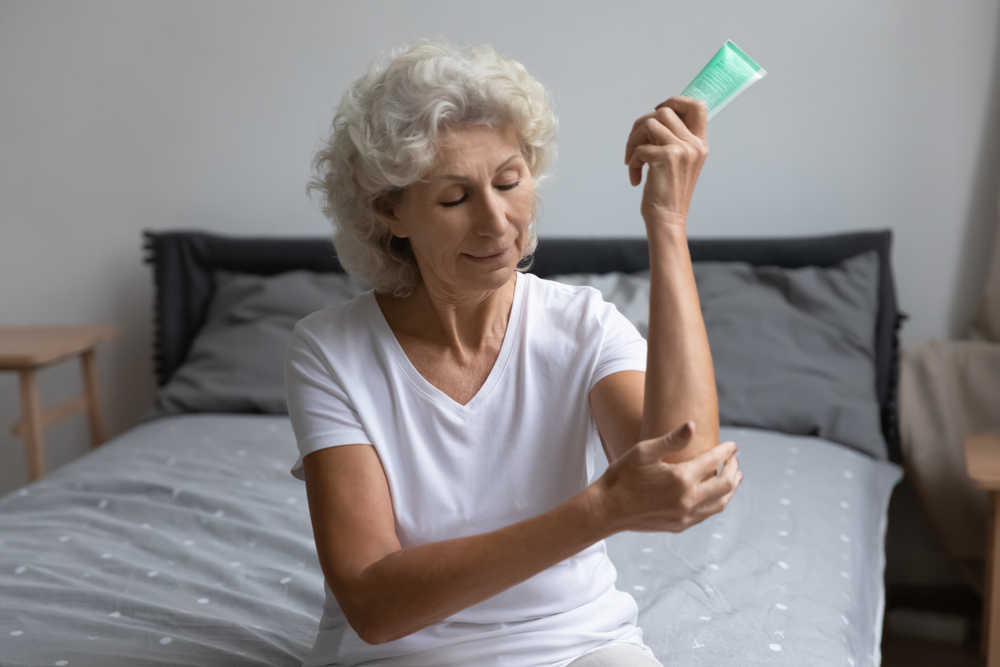On days when your arthritis is acting up and your pain level is creeping higher, the last thing you may feel like doing is exercising. However, once your flare-up subsides, you may be able to reduce future flare-ups by getting more active. Regular physical activity isn’t just important for your overall health; exercise can actually help ease your arthritis symptoms.
An estimated 58.5 million Americans (one of every four adults) have been diagnosed with arthritis, and nearly half of them experience limitations to their physical activity due to arthritis. However, the number of people with arthritis is actually highest among those who are least active—and limited physical activity is associated with a host of other concerns, including numerous chronic diseases.
How Exercise Can Help
Reduce joint pain: It may seem counterintuitive, but exercising can actually decrease your arthritic pain. At first, you may feel stiff and sore as your body acclimates to a new exercise routine, but ultimately, you’ll be building muscle, strengthening your bones, and improving your balance, all of which help offset your discomfort.
Manage chronic conditions: Regular physical activity has been shown to reduce the risk of a wide range of chronic illnesses. Exercise helps manage your weight, which is also a risk factor for numerous conditions, including cancer, diabetes, and hypertension. It engages your cardiovascular system, which promotes better heart and whole-body health. In addition, improving your muscle strength and balance may also reduce your risk of falling and build bone density to protect you against osteoporosis-related injuries.
Boost your mood: When you have a chronic condition and pain, it’s understandable that you feel out of sorts. One way to combat those feelings is getting active. Exercising releases feel-good chemicals, including serotonin, that promote a stronger sense of well-being and happiness. Some research even suggests getting more physical activity can help reduce your risk of depression.
Exercises to Try
Although physical activity can be therapeutic for arthritis in many ways, the way you approach exercise may be different than in your younger years. That makes sense, considering that your goals now are quite different. According to the Johns Hopkins Arthritis Center, someone with arthritis should approach exercise with three goals: maintaining or improving your range of motion in arthritic joints; boosting strength and endurance; and increasing activity levels to reap the psychological and health benefits.
Your doctor or care team can help you determine which specific exercises are best for you based on which joints are most affected by your arthritis and how well controlled your arthritis is. Ultimately, the exercises you choose should be easy on the joints (no pounding, twisting, etc.) and should not cause excessive pain. While some discomfort is to be expected as you ease into a new senior fitness program, you shouldn’t experience sharp, stabbing, or constant pain, nor significant swelling that doesn’t improve with rest.
Range of motion: Simple stretches like rolling your shoulders or raising your hands over your head can help relieve stiffness. You can work up to exercises like yoga or tai chi that promote flexibility and balance.
Strength and endurance: Yoga is also a low-impact way to strengthen muscle. Other muscle-strengthening exercises might involve weights or resistance bands, while endurance exercise could be as simple as working to increase the distance and speed you’re able to walk.
Aerobic activity: Walking, bicycling, and swimming are common examples of low-impact aerobic activity that get your blood pumping and promote overall wellness. Other examples you might enjoy include group fitness classes, water aerobics, and dancing.
Learn How to Live Well
Finding ways to overcome obstacles, like arthritis pain, and helping residents live better is all part of our whole-person approach to wellness. At Stonebridge at Montgomery, our award-winning LivWell wellness program allows us to create custom programming, including low-impact activities like aquatic exercise and tai chi, so residents can enjoy a stronger, healthier quality of life.
Contact us to learn how we can help you achieve your wellness goals while enjoying all the amenities of our welcoming senior living community.



